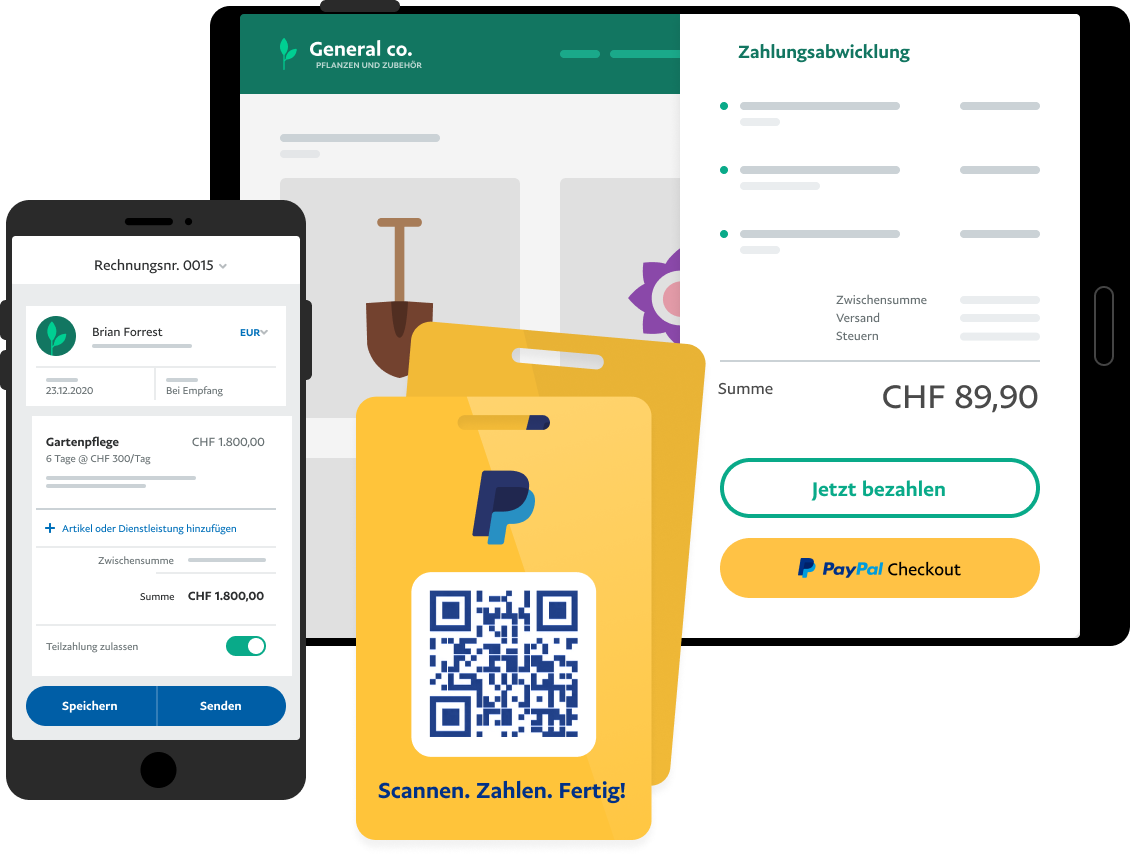Wie auch immer Sie Geschäfte machen, PayPal hat die Lösung

Bieten Sie flexible Checkouts an
Lassen Sie Ihre Kunden so bezahlen, wie Sie wollen. Akzeptieren Sie Kreditkarten, PayPal und lokale Zahlungsmethoden.
Erreichen Sie Kunden auf neuen Kanälen
Knüpfen Sie Kontakte zu neuen Kunden und erweitern Sie die Reichweite Ihres Unternehmens online, im Laden oder unterwegs.
Risikomanagement für Ihr Unternehmen
Sparen Sie Zeit und Geld und lassen Sie sich von uns dabei helfen, das Risiko betrügerischer Transaktionen mit unserem Betrugs-, Rückbuchungs-1 und Verkäuferschutz für berechtigte Einkäufe zu reduzieren.2
Integration mit vertrauenswürdigen Partnern
Von Buchhaltungssoftware und E-Commerce-Plattformen bis hin zu Marketing- und Social-Media-Tools – wir helfen Ihnen, die beste Integration zu finden, um Ihr Unternehmen wachsen zu lassen.
Zahlungslösungen, die zu Ihrem Unternehmen passen
Vom Checkout für Ihre Website bis hin zu persönlichen Zahlungen – wir bieten Ihnen Lösungen, die dazu passen, wie Sie verkaufen.
Wir sind voll und ganz kompatibel mit den Tools, die Sie bereits verwenden oder vorhaben, später zu nutzen
PayPal – eine weltweit bekannte und beliebte Marke3
20+
Jahre Erfahrung
400+
Millionen aktive Kunden
200+
Märkte weltweit
100+
verschiedene Währungen
Sprechen Sie uns an
Setzen Sie sich mit einem unserer Vertriebsspezialisten in Verbindung und erfahren Sie mehr darüber, wie PayPal Ihrem Unternehmen helfen kann.
Der No-Code-Weg für den Empfang von Zahlungen
Erstellen Sie ganz einfach einen Link, Button oder QR-Code* für ein Produkt oder eine Dienstleistung – kopieren Sie ihn dann und teilen Sie ihn auf Ihrer Website, per E-Mail, Social Media oder Textnachricht, um Zahlungen zu empfangen.
*Funktionen sind nicht in allen Regionen verfügbar.
1 Verfügbar bei berechtigten Einkäufen. Es gelten Einschränkungen.
2 Verfügbar bei berechtigten Einkäufen. Es gelten Einschränkungen.
3 Morning Consult - The 15 Most Trusted Brands in the World. März 2021. Morning Consult hat über 330.000 Kunden in zehn internationalen Märkten befragt, um einen Überblick über den aktuellen Stand des Markenvertrauens von Kunden zu erhalten.